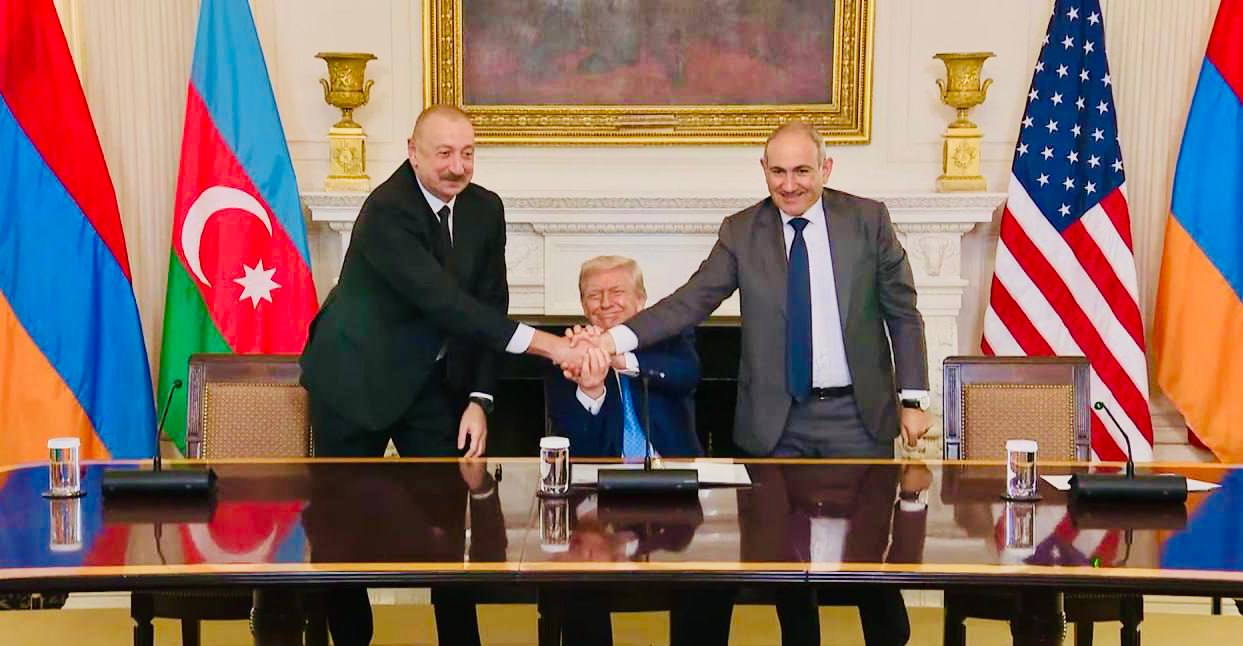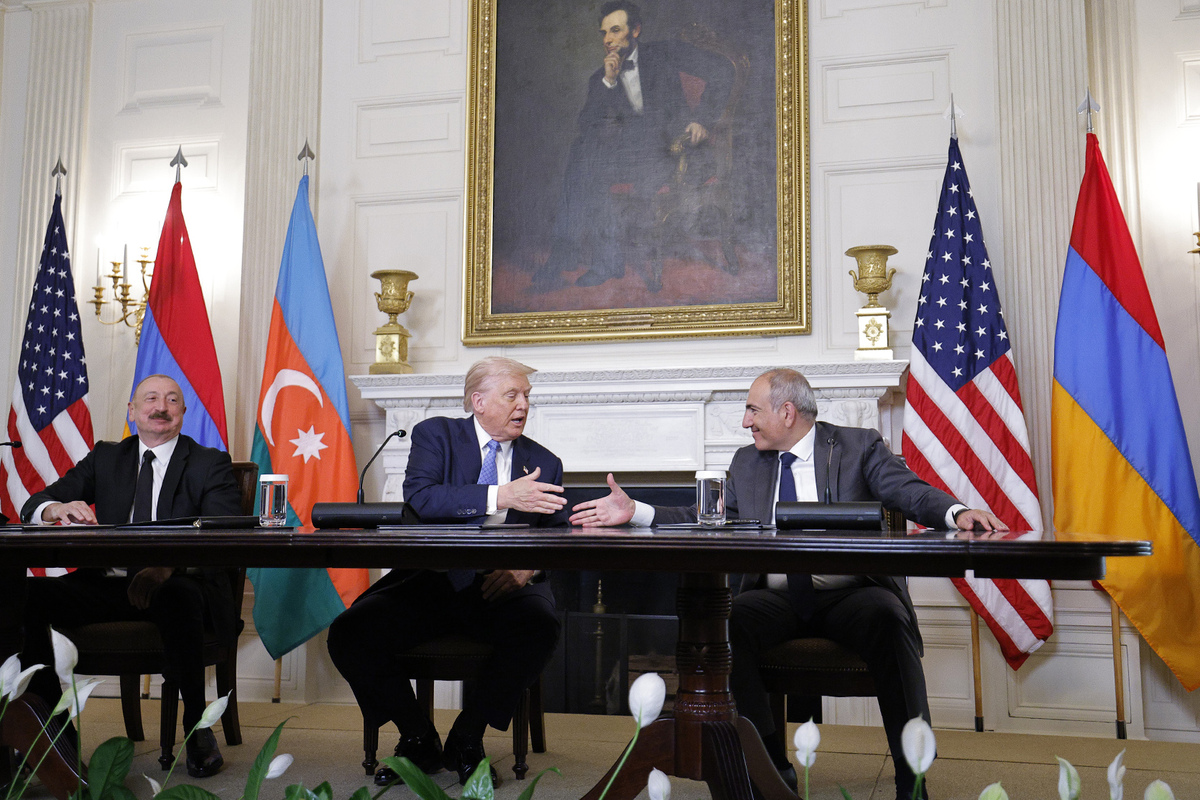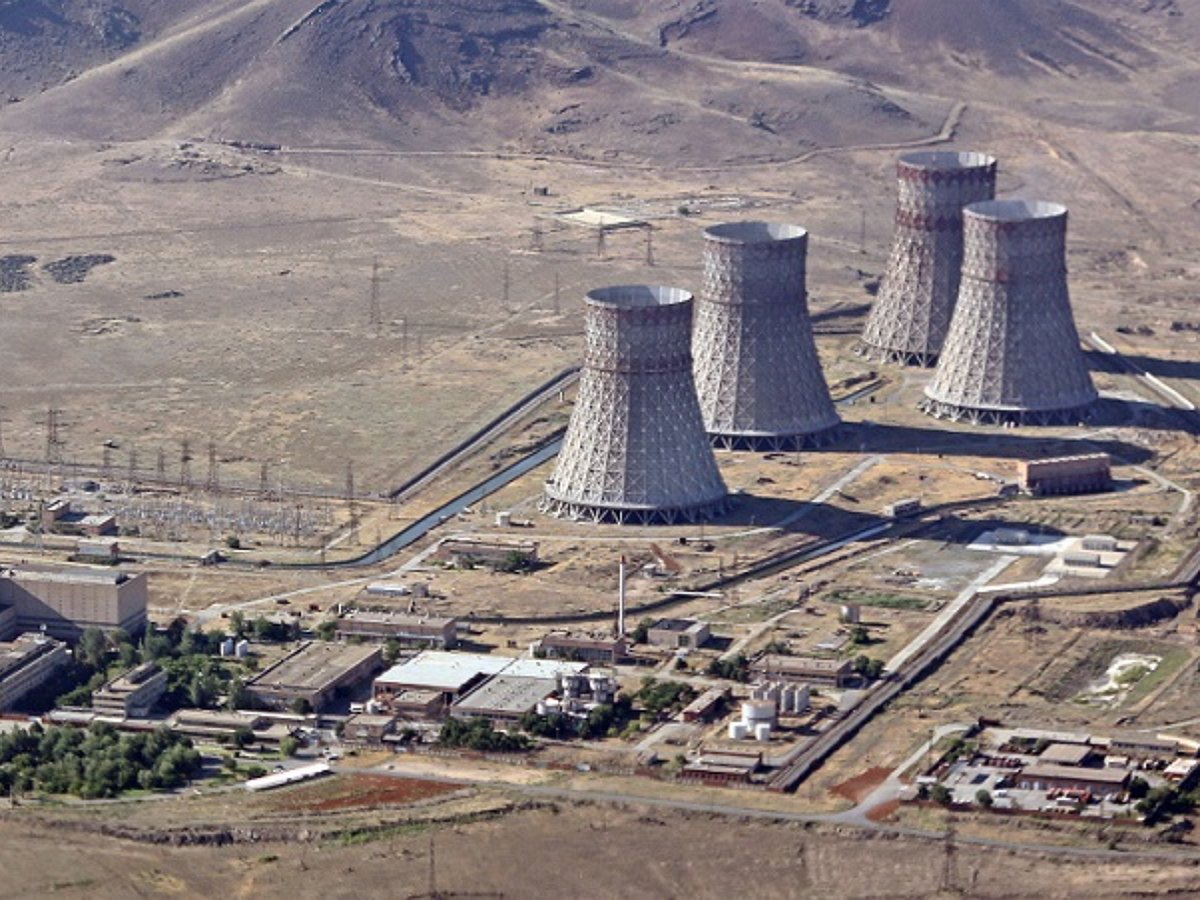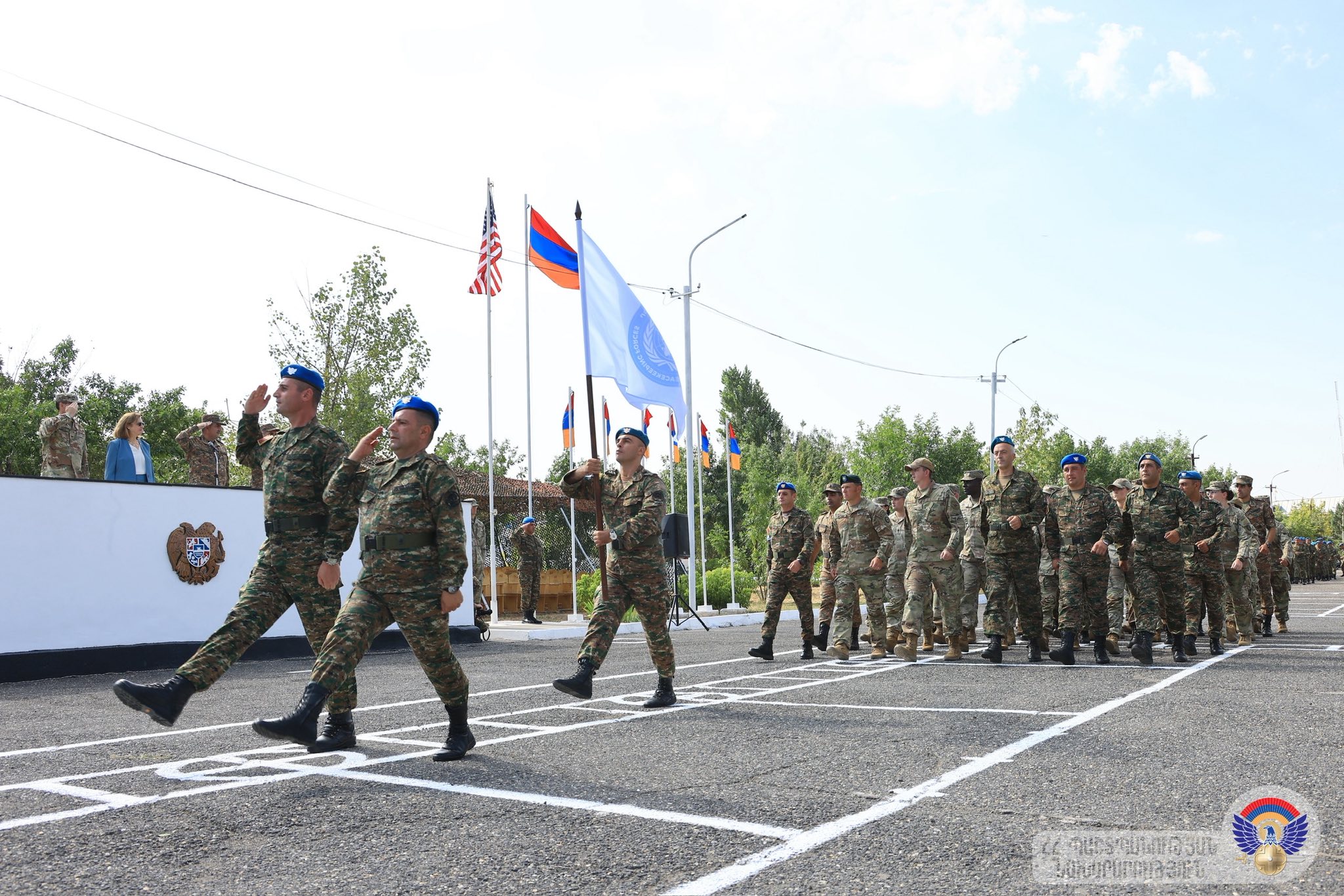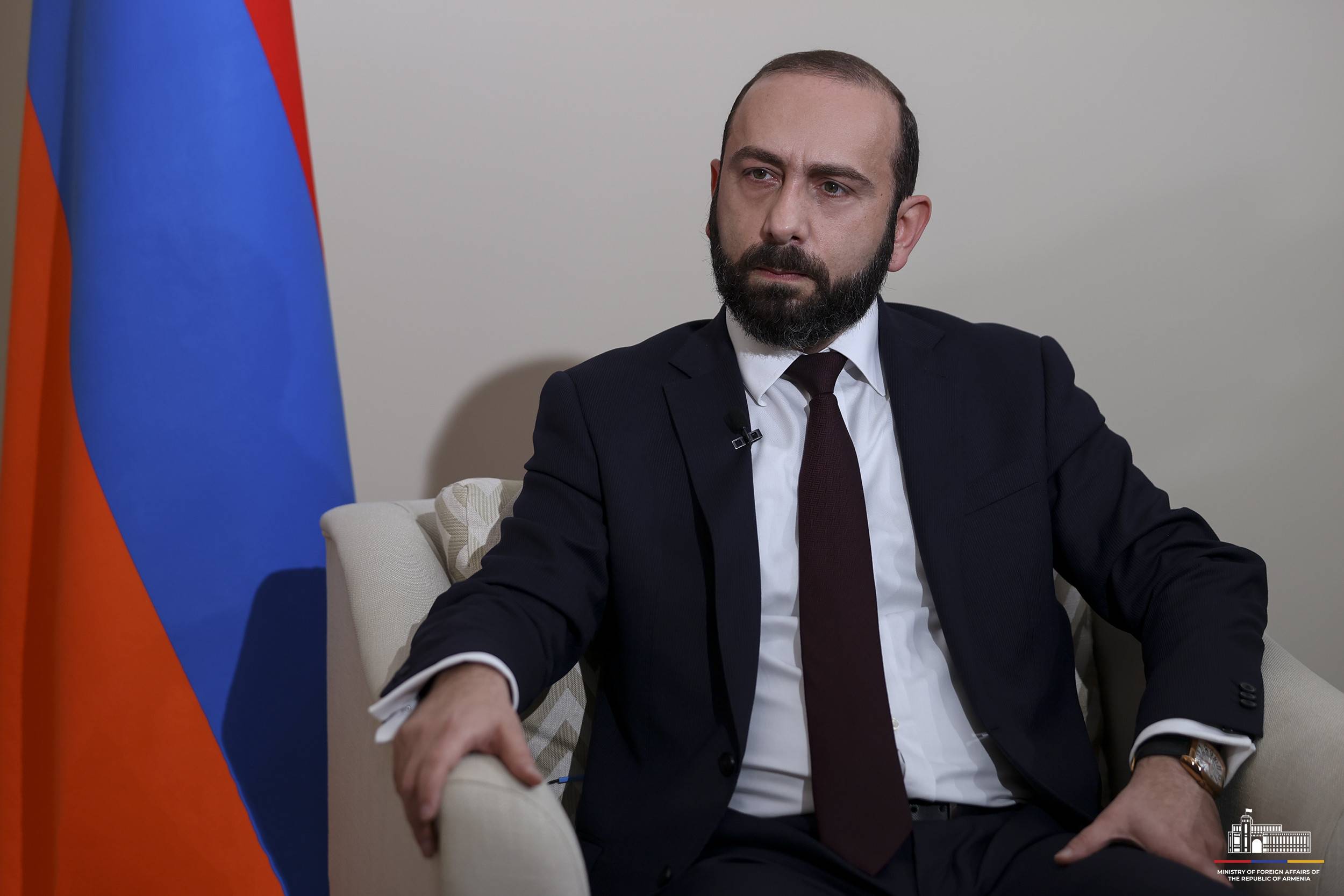“US backs both Armenia and Azerbaijan”: view from Yerevan
Armenia–US memorandums published
The Armenian government has published the texts of three memorandums of understanding signed with the United States during the Pashinyan–Trump meeting in Washington on 8 August. The documents cover cooperation on artificial intelligence, energy security and the promotion of the “Crossroads of Peace” project – an Armenian government initiative to unblock regional transport links.
Political analyst Areg Kochinyan said the world had entered an “era of revolution in communications,” with a “redistribution and reformatting of logistics networks.” He argued that maritime transport, once seen as the safest and cheapest option, is no longer viewed that way, pushing many countries to seek land-based alternatives.
Kochinyan noted that overland routes are especially important for China’s Belt and Road projects and the Middle Corridor, and explained that these routes also attract the interest of the US, China’s main rival.
“The shortest possible land route between Central Asia and Europe runs through Azerbaijan, Armenia and Turkey. If Armenia and Azerbaijan are placed on the same communications and logistics map, it will reduce the likelihood of conflict between them more effectively than if the US were interested only in Armenia. The White House has backed not just Armenia but also Azerbaijan, signing bilateral agreements with both Yerevan and Baku,” the analyst said.
Key points of the Armenia–US memorandums of understanding, along with expert commentary.
- “Armenia is now in its least vulnerable position” – key points from Pashinyan’s briefing
- A Tbilisi perspective on the historic Aliyev–Pashinyan meeting
- ‘No third-party control’ – Armenian foreign minister on the “Trump Route” programme
- ‘Armenian-Iranian relations are not a bargaining chip’: Yerevan reassures Tehran
Areas of Armenia–US cooperation
According to the signed documents, Armenia and the United States plan to work together in three key areas, with specific directions already outlined.
Under the memorandum on innovation in AI and semiconductors, the sides agreed to:
- inform US business circles and other stakeholders about Armenia’s semiconductor ecosystem and its reliable export control mechanisms;
- strengthen export controls to secure semiconductor supply chains;
- tighten export controls for the use and development of AI models;
- expand cooperation to detect and prevent the misuse of AI resources;
- train specialists for the effective use and integration of AI applications;
- encourage investment and infrastructure development in Armenia’s high-tech sector.
The memorandum on energy security sets out plans for:
- cooperation in civilian nuclear energy, including small modular reactor technologies;
- boosting investment to strengthen Armenia’s critical energy infrastructure, including battery storage for renewable energy;
- attracting investment to modernise Armenia’s power transmission and distribution networks;
- improving the cybersecurity of Armenia’s energy infrastructure through technical assistance.
The memorandum on promoting the “Crossroads of Peace” project envisages:
- strengthening Armenia’s border security through training, US government resources and the expertise of the Department of Homeland Security’s Customs and Border Protection service;
- increasing investment in cyber defence operations;
- encouraging investment to modernise Armenia’s infrastructure and border security.
Agreements valid for one year, with option to extend
The memorandums of understanding are valid for one year but can be extended up to three times, unless either side notifies the other 60 days before expiry that it intends to end the cooperation.
To coordinate implementation, both sides will appoint contact persons from the relevant institutions.
“The parties acknowledge that this memorandum [all three] does not constitute a funding commitment,” the documents state in their general provisions.
Commentary
Political analyst Areg Kochinyan recalls that at the start of 2025 Armenia signed a Charter of Strategic Partnership with the Democrats, and now the memorandums have been signed with the Republicans:
“This shows that Armenian–US relations are being treated in the US as having a strategic outlook.”
According to Kochinyan, Armenia–US agreements typically pass through three stages. The first stage — political dialogue — has already been completed. The next stage is signing framework agreements, followed by substantive cooperation.
“Armenia and the US have expressed a desire to raise their relations in several areas to a higher level. In Armenia there is now much discussion, for example, about modular nuclear power plants. But the agreement covers nuclear energy as a whole,” he explained.
The analyst warns that it will take Armenia 10 years to build a new nuclear power station, regardless of whether the decision is for small modular reactors, as proposed by US partners, or a large-scale plant.
According to Kochinyan, while the US is offering modular plants, there are also proposals for large reactors based on:
- South Korean technology,
- Franco–Canadian technology,
- Russian technology.
Kochinyan considers the Russian option problematic, stressing that the issue is not the country itself but the risk of overdependence. He notes Armenia’s energy reliance on Russia is already excessive — around 66%. In his view, cooperation with Russia in the energy sector should not be cut off entirely, but the level of dependence should be reduced.
According to Areg Kochinyan, the signing of these memorandums is clearly a step “in the right, positive direction,” and the time has now come for active work to implement the agreements.
He expects that in the coming months additional agreements will be signed setting out the details of the planned projects.
In the context of energy security cooperation, the analyst highlights Armenia’s accession to the US “123 Agreement” on nuclear cooperation. Only by signing it, he says, will Yerevan be able to access American nuclear technology, including for the construction of small modular reactors.
As for the memorandum on advancing the “Crossroads of Peace” project and the agreement to modernise Armenia’s border security, Kochinyan also expects new documents to follow. In particular, he anticipates an agreement on cooperation between Armenia’s border services and the FBI and Department of Homeland Security.
In his view, cooperation with the US in all three areas covered by the memorandums could deliver substantial economic growth for Armenia.
Armenia–US memorandums published










